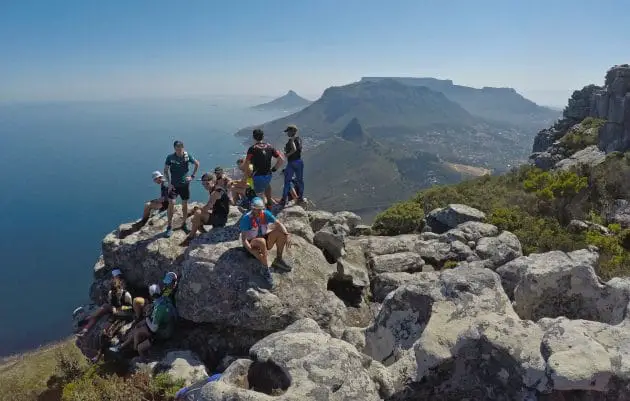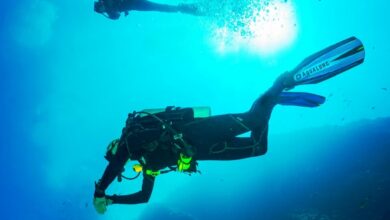Accessible Tourism For All
In the spirit of mainstreaming disability issues, the United Nations World Tourism Organisation’s (UNWTO) General Assembly adopted a Resolution entitled “Accessible Tourism for All”. The following article outlines the resolution as adopted in 2005 to serve as a guideline for the travel trade.
I. DEFINITION OF THE TERM “Persons with disabilities”
For the purpose of this document the term “persons with disabilities” includes all persons who, owing to the environment being encountered, suffer a limitation in their relational ability and have special needs during travel, in accommodations, and other tourism services, particularly individuals with physical, sensory and intellectual disabilities or other medical conditions requiring special care, such as elderly persons and others in need of temporary assistance.
II. TOURISM INFORMATION AND PUBLICITY
1. Tourism literature and other promotional material employed in tourism should provide a clear indication of accessible services and facilities, preferably accompanied by easily understandable international symbols.
2. Tourist reception areas (tourist destinations) should provide a listing of support services for tourists with disabilities. Listings of such services should include, as a rule, repair and replacement facilities for prostheses and equipment, veterinary clinics for guide dogs, and suppliers and distributors of specialized medical services.
3. Reservation systems should include unequivocal data on the level of accessibility of facilities and services advertised to persons with disabilities, in order to ensure correct information and facilitate booking procedures.
4. Reservation systems should be accessible so that any tourist can interact with them independently. To this end, websites and other reservation systems should be designed in such a way as to be usable by everyone.
5. Those entrusted with receiving and following up on tourism consumer complaints should register and resolve complaints concerning the failure to provide services and facilities promoted or advertised as accessible, by a clearly designated procedure.
III. PREPARATION OF STAFF
1. The staff of tourism establishments and tourism-related services should be prepared to understand and deal with the problems facing customers with disabilities.
2. Staff should receive adequate training in the control and provision of services and the operation of facilities designated for customers with disabilities.
3. Among the staff there should be persons familiar with means of communicating with persons with sensory impairments.
4. Staff should be trained to deal with persons with disabilities courteously and expeditiously, to provide complete information on services and facilities available to them, and to offer assistance to facilitate their access to non-accessible services.
5. Safety officers or their equivalents in tourist establishments and vehicles accommodating and carrying persons with disabilities should, as a rule and at all times, have a list of rooms and compartment numbers occupied by such persons, in case of emergencies.
IV. COMMON REQUIREMENTS
The following should be considered common requirements in tourism facilities and sites:
1. Parking areas*
(a) Special parking areas should be available for the vehicles of persons with reduced mobility bearing proper identification as near to the entrance/exit of the building or sites as possible. Such areas should be monitored so that they are not used by non-disabled persons.
(b) Specially designated set-down and pick-up points should be situated as near as possible to the entrance/exit of the building or site for the arrival and departure of passengers with disabilities. Such points should be monitored so that they are not encumbered by other vehicles or objects.
(c) Individual parking spaces should be sufficiently large to enable passengers with disabilities to move comfortably between cars and wheelchairs and be situated so that persons using wheelchairs, crutches or braces are not compelled to move behind cars. To the extent possible, the access route to the site or building should be sheltered.
* With respect to air transport and related facilities, transport and parking areas at terminal buildings and related facilities, specific and detailed recommendations are included in Chapter 9.11 of ICAO document 9184 Airport Planning Manual and in Chapter 6 (International Airports Facilities and Services for Traffic) of Annex 9 to the Convention on Civil Aviation (Ninth Edition) and the related guidance material in the Attachment thereto.
2. Signage
(a) Information, check-in and ticketing desks should be clearly indicated and have an accessible customer-service area reserved for use by persons with reduced mobility and as near as possible to the entrance.
(b) Announcements should be both visual (clear-type on electronic notice- boards or large video screens) and acoustic (preceded by a tone).
(c) Accessible services and facilities should be clearly indicated easily understood symbols of adequate size and in chromatic contrast with the background.
3. Elevators
In multi-storey structures an adequate number of elevators should be large enough for a person using a wheelchair to enter and turn easily. They should be especially designated and equipped for easy operation by such persons and by those who are blind (i.e., placement of controls, indications in Braille, acoustic and written information).
4. Public telephones
Public telephones should be designed and laid out for public use in such a way that they can be used by everyone regardless of height, mobility problems, or sensory problems. To this end, height, approach clearances, sound amplification, formats in which information is provided, etc., should be taken into account.
5. Public toilets
Accessible toilet stalls and washbasins should be installed at the same location as the standard toilets. Both the dimensional aspects and the technical aids needed to move from the wheelchair to the water closet and vice versa shall be taken into account in such toilet stalls. Consideration should also be given to the approach clearances to the water closet and washbasin, as well as to faucets and flushing mechanisms.
6. Pricing
Regardless of additional expenditures which may be necessary to obtain accessible services and facilities, such services and facilities shall not give rise to an increase in rates for customers with disabilities.
V. REQUIREMENTS CONCERNING SPECIFIC FACILITIES 3
A. Terminals, stations and related facilities
1. Shuttle services to and from all terminals, stations and related facilities for the various modes of transport should be readily accessible to passengers with reduced mobility, particularly those using wheelchairs.
2. Terminals should, where possible, be on one level and should be equipped with ramps where there is a change in elevation. Accessible ramps, elevators or platform lifts should be provided when necessary.
3. All information provided shall take into account the special needs of persons with sensory problems. Therefore, all information should be in visual and acoustic format. Both formats shall be made available to the public in such a way as to ensure that the information is perceived under the best possible conditions, in terms of ambient noise as well as lighting and figure-background contrast.
4. In order to allow those with sight impairments and those with hearing loss to cross all roads of access safely, these should be provided with traffic lights with acoustic and visual signals.
5. Access to modes of transport should be as simple as possible, with assistance available when requested.
6. Persons in wheelchairs who are required to transfer to special boarding chairs should be able to do so as near to the mode of transport as possible, with their wheelchairs being handled, stowed, and transported so as to be immediately available undamaged on arrival at their destination or transfer point.
B. Accommodation facilities
1. A reasonable number of rooms in an accommodation establishment should be fully accessible to a person in a wheelchair without assistance.
2. Such rooms should be designed in such a way as to allow all users to carry out the actions of moving, grasping, locating, and communicating easily and independently. This shall apply also to bathrooms and terraces if the room is so equipped.
3. To this end, the space and technical aids needed to allow any manoeuvre to be carried out easily and safely shall be taken into account. The needs of persons with impaired dexterity, blind persons, and deaf persons shall be taken into account in the design of all devices and actuators.
4. Such rooms in an establishment should be fitted with alarm systems suitable for deaf visitors and a system of communication between the reception desk and the room that is suitable for such persons.
5. Corridors and passageways should be of a width to allow the passage of two wheelchairs so they are not blocked in normal traffic; otherwise, crossing zones should be provided.
6. The foregoing recommendations should also apply to camping facilities, particularly in respect of accessible bathrooms and toilets as well as alarm systems.
C. Catering facilities
A representative number of restaurants, cafeterias, cafes and bars in the area should provide accessible facilities which take into account ease of exterior access, furniture designed to enable their utilization by users in wheelchairs, bars at different heights, menus in Braille and with easily readable type, accessible bathrooms, etc. Such establishments should be clearly marked to make them easy to find.
D. Museums and other buildings of tourist interest
1. Museums and other buildings of historic, cultural and religious interest, which are available for tourist visits, should resolve problems that may be encountered by visitors with reduced mobility in their horizontal or vertical movement, by providing ramps or elevators as the case may be.
2. The information provided shall take into account the needs of deaf or blind visitors. To this end, all information shall be provided in both written and acoustic form.
3. Visitor relations staff shall have the necessary training to attend to visitors with disabilities. They shall also have the necessary training to be able to communicate with deaf persons.
4. There should be a suitable service for loaning out wheelchairs or other devices for visitors with reduced mobility.
E. Excursions
1. Sightseeing buses should be able to accommodate tourists with physical disabilities and should provide both audio and visual information and other assistance to blind and deaf people en route.
2. Wherever possible sightseeing companies should employ sign language interpreters for deaf and hearing-impaired tourists and/or printed descriptive material at all visit sites.
F. Conference facilities
In addition to the other characteristics mentioned earlier and applying to buildings (entrances, telephones, toilets, signing, elevators, parking facilities, etc.), conference facilities should be equipped with adequate seating facilities or reserved areas for persons in wheelchairs as well as special hearing devices and/or magnetic induction loops for persons with hearing impairments.
G. Major roads
Facilities and installations available to travellers on major through roads, including toll roads, should feature accessible facilities and services for travellers with disabilities.
Published with acknowledgement to UNWTO: www.unwto.org
Note: Adopted by resolution A/RES/492(XVI)/10 at the sixteen session of the General Assembly of the World Tourism Organization (Dakar, Senegal, 28 November – 2 December 2005), on the recommendation of the Quality Support and Trade Committee.
In October 2009, UNWTO again underscored the importance of accessibility with the Declaration on the Facilitation of Tourist Travel, approved by its General Assembly in Astana, Kazakhstan. Of a purely recommendatory nature, it advises that “great efforts should be made to ensure that tourism policies and practices are inclusive of persons with disabilities.” The declaration calls upon states to ensure the accessibility of tourism establishments, the availability of special facilities for persons with disabilities at no additional cost, the publication of detailed information on the availability of such services and the special training of tourism staff. It further endorses the general principles enshrined in Article 3 of the Convention on the Rights of Persons with Disabilities and invites all States to implement them.
In 2011, UNWTO established an action plan to carry out several activities with external partners in the field of accessibility, including the development of guidelines, indicators, benchmarking and training to make tourism destinations accessible for persons with disabilities (1 billion people worldwide, according to the World Health Organziation, 2011).



